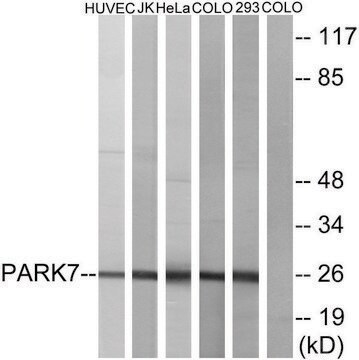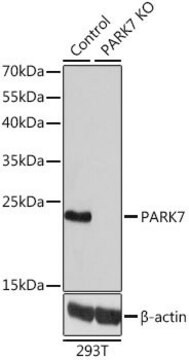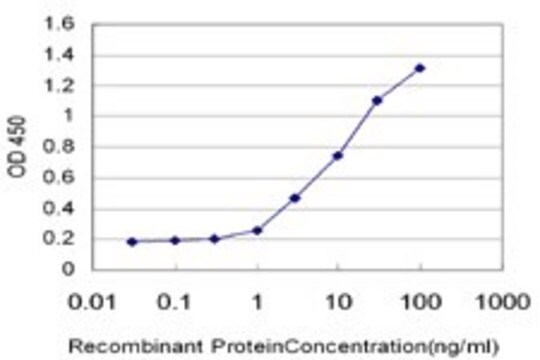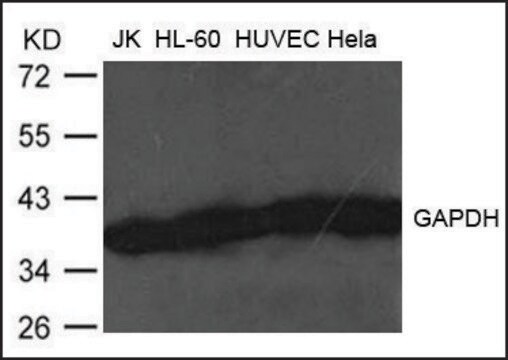MABN1773
Anti-oxDJ-1 Antibody (Cys106), clone M149
clone M149, from mouse
Synonym(s):
Protein DJ-1, Oncogene DJ1, Parkinson disease protein 7, oxDJ-1 (Cys106)
About This Item
WB
western blot: suitable
Recommended Products
biological source
mouse
Quality Level
antibody form
purified immunoglobulin
antibody product type
primary antibodies
clone
M149, monoclonal
species reactivity
mouse, human
technique(s)
immunohistochemistry: suitable
western blot: suitable
isotype
IgG2aκ
NCBI accession no.
UniProt accession no.
shipped in
wet ice
target post-translational modification
unmodified
Gene Information
human ... PARK7(11315)
General description
Specificity
Immunogen
Application
Western Blotting Analysis: A reporesentative lot detected basal DJ-1 oxidation (oxDJ-1) in human neuroblastoma SH-SY5Y cells and murine fibroblasts from wild-type, but not DJ-1 knockout, mice, as well as enhanced oxDJ-1 in H2O2-treated SH-SY5Y cells (Saito, Y., et al. (2014). J Neuropathol Exp Neurol. 73(7):714-728.).
Neuroscience
Developmental Signaling
Quality
Western Blotting Analysis: 0.1 µg/mL of this antibody detected enhanced DJ-1 oxidation in 10 µg cell lysate from H2O2-treated human neuroblastoma SH-SY5Y cells.
Target description
Physical form
Storage and Stability
Other Notes
Disclaimer
Not finding the right product?
Try our Product Selector Tool.
Storage Class Code
12 - Non Combustible Liquids
WGK
WGK 1
Flash Point(F)
Not applicable
Flash Point(C)
Not applicable
Certificates of Analysis (COA)
Search for Certificates of Analysis (COA) by entering the products Lot/Batch Number. Lot and Batch Numbers can be found on a product’s label following the words ‘Lot’ or ‘Batch’.
Already Own This Product?
Find documentation for the products that you have recently purchased in the Document Library.
Our team of scientists has experience in all areas of research including Life Science, Material Science, Chemical Synthesis, Chromatography, Analytical and many others.
Contact Technical Service






